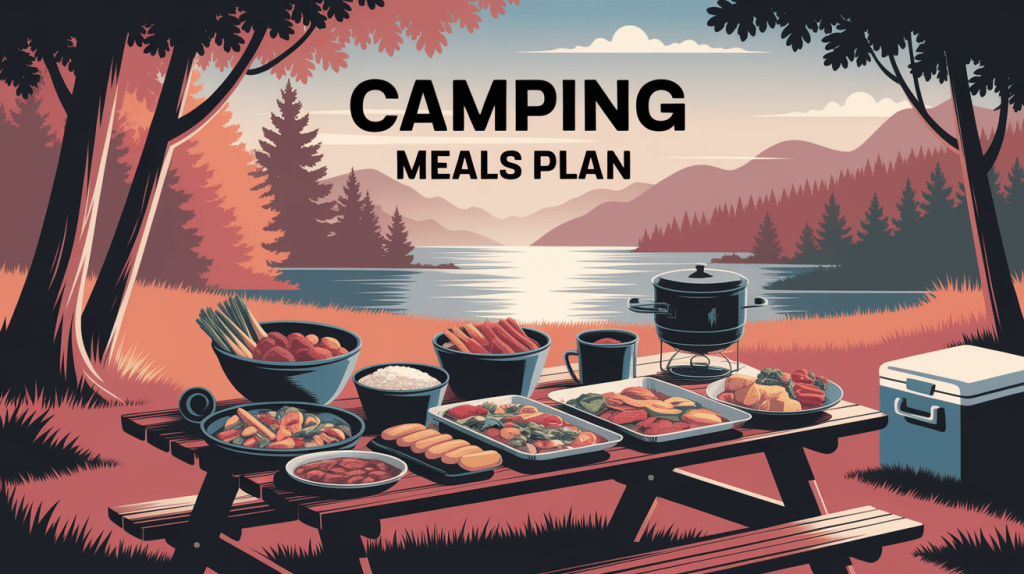Planning camp meals without a system can quickly turn your outdoor escape into a chaotic grocery run. A camping meal plan template changes how you organize food for trips of any length.
No more forgotten ingredients, last-minute store stops, or hangry campers wondering what’s for dinner. The right template helps you track meals, ingredients, and prep work, saving time and reducing stress.
It ensures you pack exactly what you need—no more, no less. From weekend trips to week-long excursions, a thoughtful meal plan lets you focus on what matters: enjoying the wilderness, not worrying about your next meal.
Ready to streamline your camp cooking? Let’s find meal planning that actually works.
Why a Camping Meal Plan is Essential
Having a solid camping meal plan before hitting the trail can completely change your outdoor experience. Planning your meals ahead of time saves precious vacation hours that would otherwise be spent deciding what to eat or making unexpected trips to nearby stores.
It’s also much gentler on your wallet, helping you avoid costly campground shops or overpriced trail snacks.
A thoughtful meal plan ensures everyone gets proper nutrition to fuel hiking, swimming, and other activities that demand energy.
Perhaps most importantly, meal planning eliminates the stress of figuring out food when you’re tired from a day of happenings. There’s nothing worse than hungry campers and no clear dinner strategy as the sun sets!
With a prepared meal plan, you can relax around the campfire knowing exactly what’s on the menu for each day. This allows you to focus on creating memories rather than wondering what’s for dinner.
What to Consider When Planning Your Camping Meals
Before packing food for your camping trip, consider a few key factors that will affect your meal choices. Consider who’s coming along, what cooking equipment you’ll have, and how you’ll store everything safely.
The weather and how much time you want to spend cooking are also important to consider.
1. Type of Camping Trip
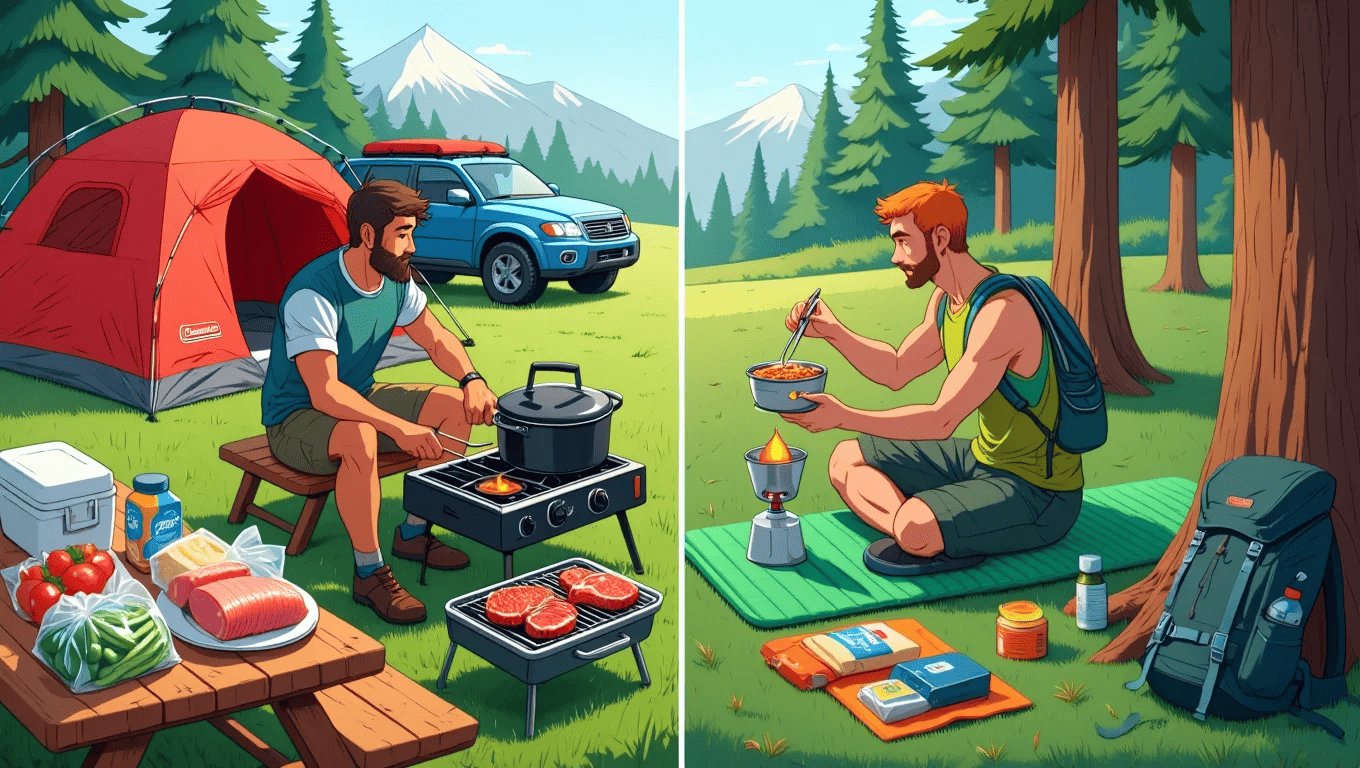
Car camping allows you to bring heavier, more perishable ingredients since you can pack a large cooler and not worry about weight.
Backpacking, on the other hand, requires lightweight, compact foods that won’t spoil easily and provide high energy.
For backpacking trips, focus on dehydrated meals, trail mix, energy bars, and instant foods that only need hot water. Consider how far you’ll be from stores, too – remote camping spots mean you’ll need to be completely self-sufficient.
2. Group Size and Preferences
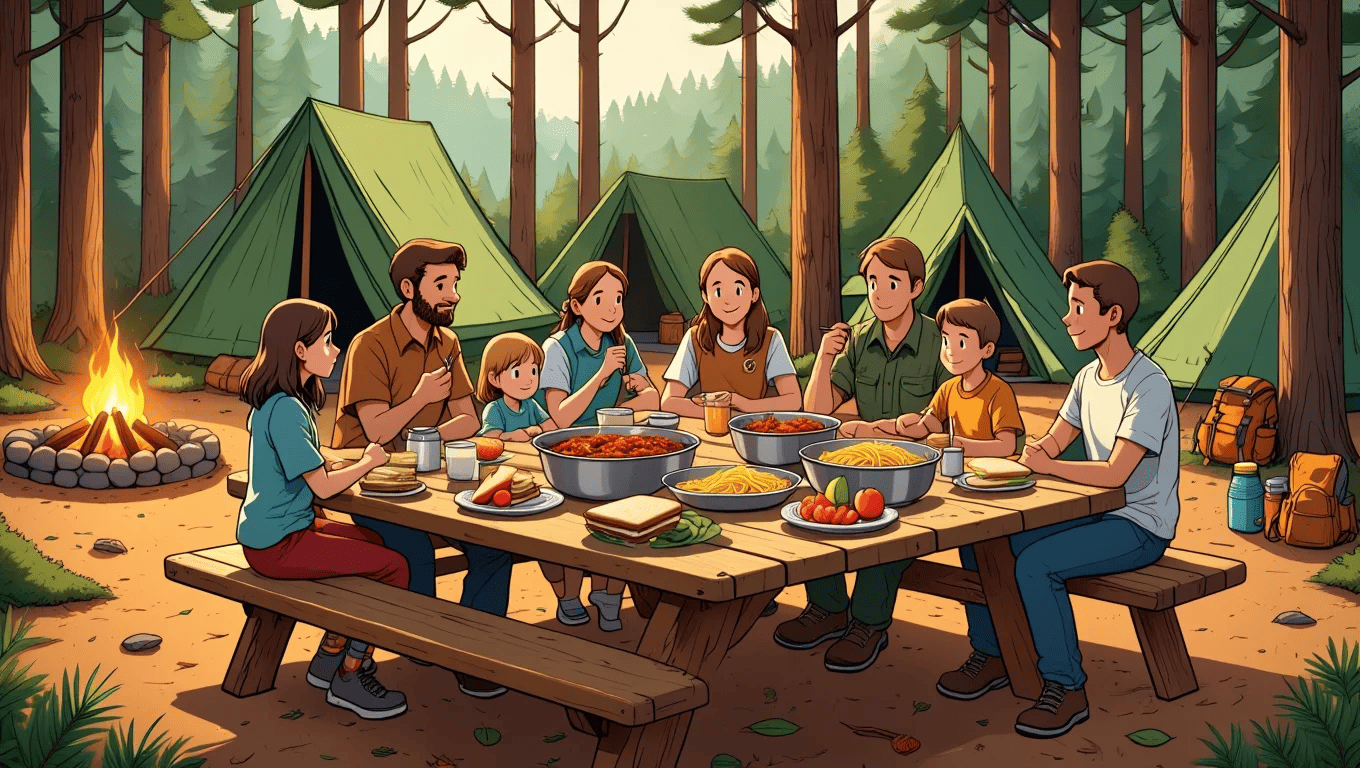
Planning meals for a group means accounting for everyone’s needs and restrictions. Survey your fellow campers about allergies, dietary preferences, and restrictions before making your meal plan.
For kids, pack familiar foods they enjoy, but also bring along easy-to-prepare alternatives in case they become picky in unfamiliar surroundings.
With larger groups, consider one-pot meals like chili or pasta that can be easily scaled up. Remember that outdoor activities often increase appetites, so pack more food than you might usually eat at home.
3. Storage and Equipment
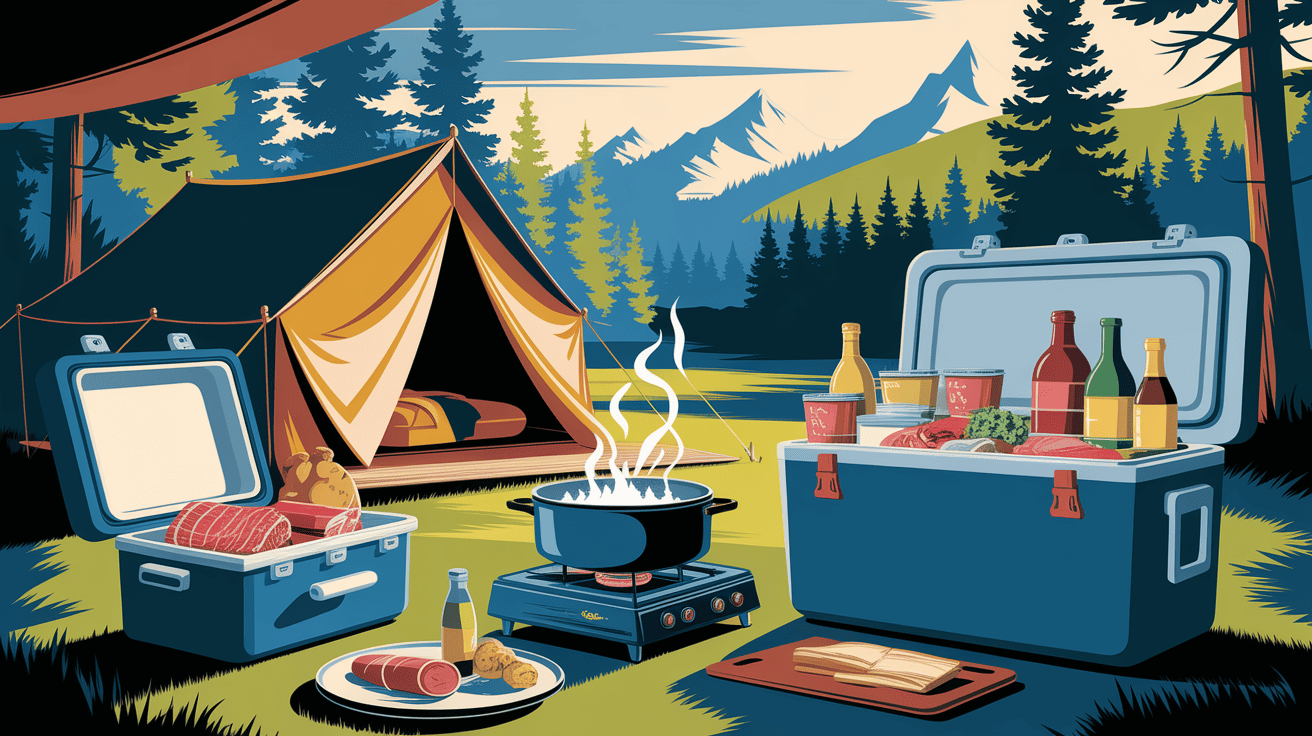
Your available cooking equipment significantly impacts what meals you can prepare. A basic camping stove works well for boiling water and simple pan cooking, while a portable grill opens up options for fresh meats and vegetables.
Don’t forget to check campground fire restrictions before planning meals that require an open flame.
For food storage, invest in a good cooler for perishables and secure containers to protect food from wildlife. In bear country, special precautions like bear-proof containers or food hanging systems are essential.
4. Meal Preparation Time
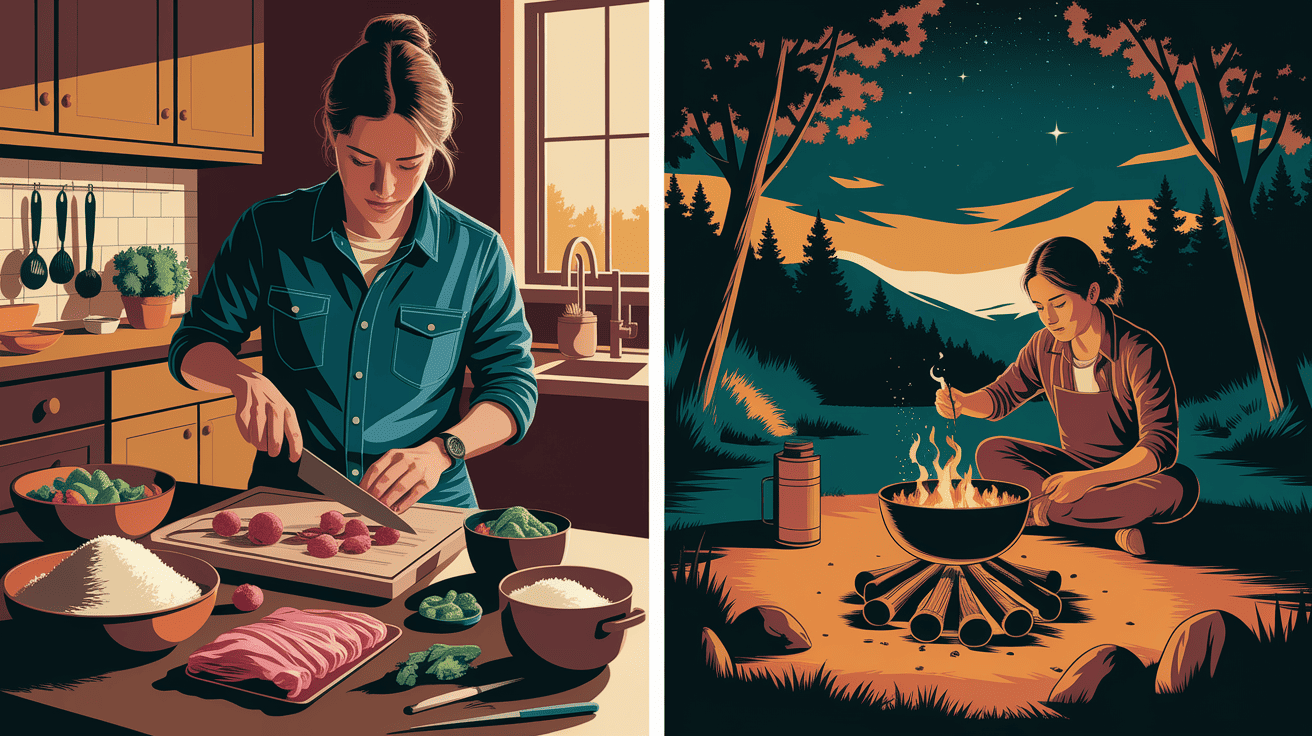
Most campers prefer spending time enjoying nature rather than cooking elaborate meals. Look for recipes with minimal prep time and few ingredients that still deliver satisfying results.
Consider preparing certain components at home – chop vegetables, pre-cook rice or pasta, or marinate meats before leaving. One-pot meals and foil packet dinners minimize both cooking time and cleanup.
Remember that cooking often takes longer outdoors than in your kitchen, especially when dealing with wind or other weather conditions.
5. Weather Considerations
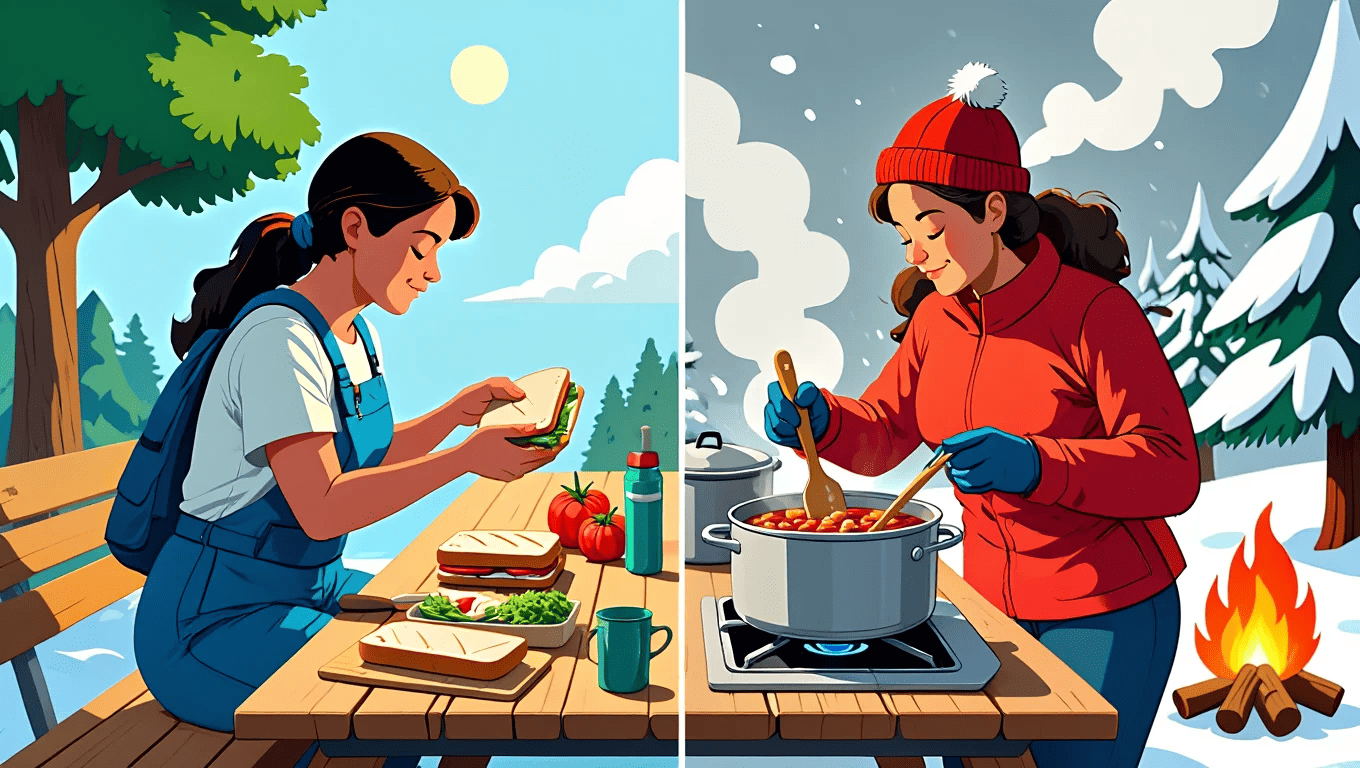
The forecast should significantly influence your meal planning. Hot weather calls for lighter, refreshing meals that don’t require long cooking times and won’t heat up your campsite.
Cold-weather camping demands heartier, warming meals like soups and stews that provide more calories to maintain body heat.
Rainy conditions might limit your ability to cook over an open fire, so have backup meal options that can be prepared on a camp stove under shelter. Always pack some no-cook meal options for emergencies or days when the weather makes cooking difficult.
Quick and Easy Meal Ideas for Each Day
Planning your camping meals ahead of time makes your outdoor experience much more enjoyable. A simple meal plan keeps everyone fed and happy without spending too much time cooking.
This 7-day plan includes easy-to-prepare options that work well in a camping environment. Adjust according to your preferences and cooking equipment.
| DAY | BREAKFAST | LUNCH | DINNER | DESSERT |
|---|---|---|---|---|
| Arrival Day | Granola Bars & Fruit | Packed Sandwiches | Pre-Made Soup & Bread | S’mores |
| Day 2 | Oatmeal with Dried Fruit | Smokies with Sauerkraut | Foil Packet: Sausage & Veggies | Chocolate |
| Day 3 | Breakfast Burritos | Pita Sandwiches | Chili | Banana Boats |
| Day 4 | Pancakes | Leftover Chili | Burgers & Corn | Dutch Oven Cobbler |
| Day 5 | Egg & Bacon Sandwiches | Tuna Wraps | Campfire Tacos | Trail Mix |
| Day 6 | French Toast | Pasta Salad | Kebabs | Campfire Cones |
| Departure Day | Cereal | Packed Sandwiches | Travel Meal | Remaining Snacks |
Prep at home to save time at the campsite and pack ingredients in meal-specific containers. Keep some no-cook backup options for rainy days or when you’re tired.
This plan helps you focus more on enjoying nature and less on food preparation.
Tips for Efficient Meal Prep and Cooking at the Campsite
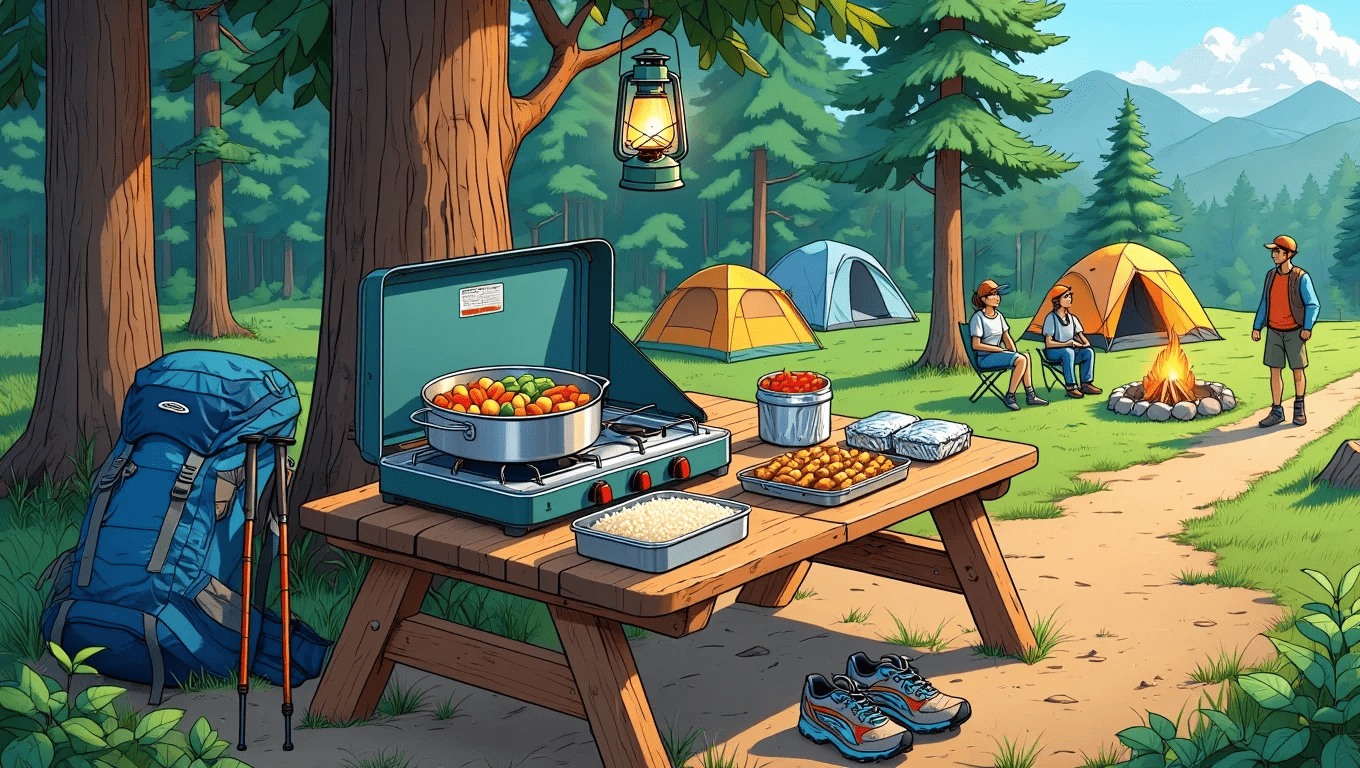
Cooking at a campsite doesn’t have to be complicated or time-consuming. With a little planning, you can enjoy delicious meals without spending your entire camping trip preparing food.
These practical tips will help streamline your camp cooking and give you more time for enjoying and relaxation.
1. Pre-Cook and Freeze
Preparing meals ahead of time is a game-changer for camp cooking. Before your trip, cook soups, stews, chili, pasta sauce, or taco meat at home, then freeze them flat in ziplock bags.
These will act as ice packs in your cooler and be ready to reheat when needed. Pre-chopping vegetables and pre-cooking rice or pasta can save valuable campsite time.
Breakfast burritos can be assembled, wrapped in foil, and frozen for an easy morning meal. Just reheat them over the campfire or on a camp stove until warmed through.
2. Pack Non-Perishable Foods
Non-perishable foods are the backbone of smart camp meal planning. Stock up on canned beans, tuna, fruits, and vegetables that don’t require refrigeration.
Dry goods like pasta, rice, oatmeal, and pancake mix provide filling meal bases without a cooler space. Trail mix, nuts, beef jerky, and granola bars offer ready-to-eat protein for hikes or between meals.
Shelf-stable milk, peanut butter, and honey are versatile ingredients that won’t spoil. Always include some no-cook meals using these items in case weather, equipment issues, or exhaustion make cooking difficult.
3. Reusable and Multi-Use Ingredients
Planning meals with overlapping ingredients reduces what you need to pack and minimizes waste. Ground beef can star in tacos one night and burgers the next, while bell peppers can appear in breakfast scrambles, lunch wraps, and dinner foil packets.
Tortillas are incredibly versatile—use them for breakfast burritos, lunch wraps, and as a side with chili. Planning this way means you’ll use up fresh ingredients before they spoil.
Cook extra portions of staples like rice or grilled chicken to repurpose in later meals. This approach makes your cooler and food storage more efficient while simplifying meal preparation.
4. Essential Camp Cooking Tools
The right tools make camp cooking much easier, but you don’t need everything from your home kitchen. Focus on multipurpose items: a good knife, cutting board, cooking spoon, spatula, and tongs handle most tasks.
A cast-iron skillet and medium pot can cook nearly anything, while aluminum foil creates cooking packets and doubles as a grill surface. Don’t forget a coffee-making method, measuring cups, and a can opener.
Store matches or a lighter in a waterproof container. Keep everything in one durable box with a checklist taped inside to ensure nothing gets left behind when packing up.
Alternative Meal Ideas for Special Diets
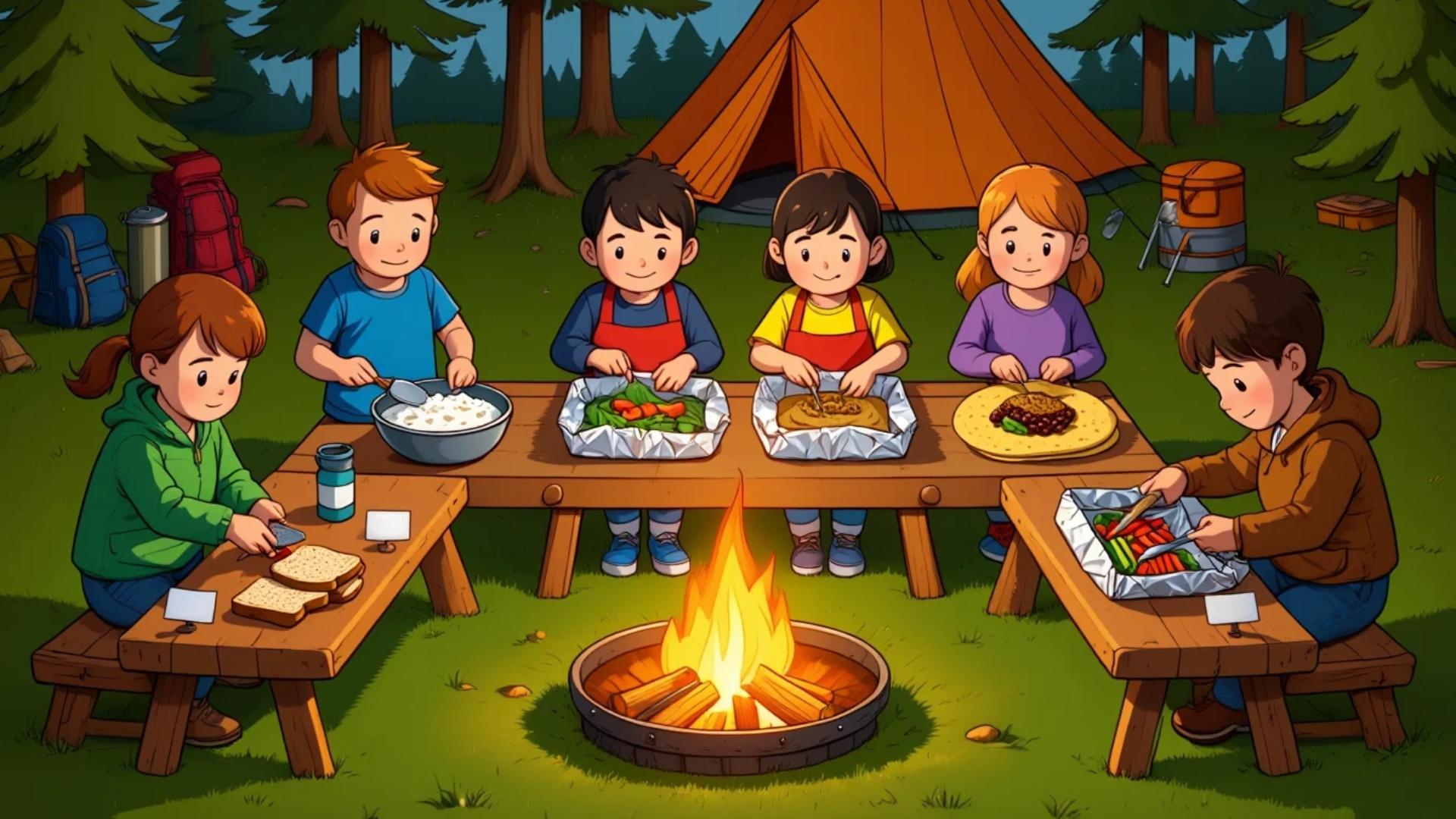
Not everyone can eat the same foods when camping. Having options for different dietary needs ensures everyone enjoys mealtime. These alternatives work well outdoors and require similar cooking equipment to traditional camping meals.
- For vegetarians: Bean quesadillas, lentil soup, or pasta with vegetable sauce.
- Gluten-free campers: Corn tortilla tacos, potato hash with eggs, or rice bowls.
- Vegan options: Oatmeal with dried fruits, hummus wraps, and bean chili.
- For nut allergies: Seed butters for sandwiches and sunflower seeds for trail mix.
- Dairy-free alternatives: Coconut milk for oatmeal and dairy-free chocolate for s’mores.
- One-pot meals: Build-your-own foil packets where each person adds preferred ingredients.
Ask everyone about dietary needs before the trip and label containers clearly to avoid mix-ups. With these options, everyone can gather around the campfire and enjoy meals together regardless of dietary restrictions.
Summing It Up
A camping meal plan template isn’t just about organization—it’s your ticket to freedom at the campsite.
With meals mapped out and ingredients accounted for, you’ll spend less time stressing over food and more time making memories under the stars.
The best templates adapt to your needs while keeping the process simple. Start with our suggestions, then customize based on your camping style, group size, and menu preferences.
Soon, meal planning will become second nature, as essential to your pre-trip routine as packing your tent. The outdoors are calling, and now nothing stands between you and that perfect campfire dinner. Happy camping and even happier eating!
Return soon for fresh food tips, campfire recipes, and creative outdoor cooking ideas.

